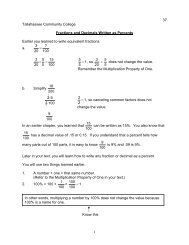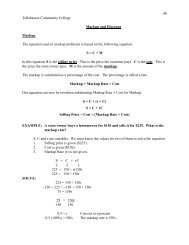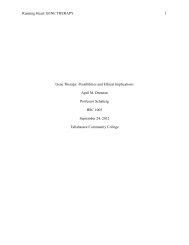Writing the ANNOTATED BIBLIOGRAPHY
Writing the ANNOTATED BIBLIOGRAPHY
Writing the ANNOTATED BIBLIOGRAPHY
You also want an ePaper? Increase the reach of your titles
YUMPU automatically turns print PDFs into web optimized ePapers that Google loves.
<strong>Writing</strong> <strong>the</strong> <strong>ANNOTATED</strong> <strong>BIBLIOGRAPHY</strong><br />
First, what is a <strong>BIBLIOGRAPHY</strong> ? Most simply, it is a list.<br />
A list of <strong>the</strong> works of a specific author.<br />
A list of items relating to a given subject. [articles, books, websites . . . ]<br />
Description and identification of <strong>the</strong> editions, dates of issue, authorship, and<br />
typography of books or o<strong>the</strong>r written material.<br />
A filmography is a list of motion pictures by an actor, a director, or on a topic.<br />
A discography is a list of musical recordings by a composer, performer or group.<br />
Then, what is an ANNOTATION ?<br />
An annotation is a critical or explanatory note.<br />
Annotation is <strong>the</strong> act or process of adding commentary or notes.<br />
What is <strong>the</strong> difference between an ANNOTATION and an ABSTRACT ?<br />
An abstract is a brief factual description of a specific article or book, often<br />
written by <strong>the</strong> author.<br />
An annotation, however, will reflect <strong>the</strong> personal judgement and opinion of <strong>the</strong><br />
person compiling <strong>the</strong> bibliography. In an annotation, you may compare that work<br />
to o<strong>the</strong>rs you viewed, comment on your rating of that source, criticize or extol<br />
<strong>the</strong> value of <strong>the</strong> document.<br />
An <strong>ANNOTATED</strong> <strong>BIBLIOGRAPHY</strong>, <strong>the</strong>refore, is a listing which contains both <strong>the</strong> citation<br />
information, as well as a critical evaluative description of <strong>the</strong> items selected.<br />
HOW LONG ARE ANNOTATIONS ? Depends on your assignment. Your instructor will<br />
specify <strong>the</strong> required length of <strong>the</strong> annotations. Typically, annotations are around 150<br />
words [or about 10 lines in 12 pitch font, normal margins].<br />
To get started<br />
Select a topic.<br />
Select <strong>the</strong> books, articles or o<strong>the</strong>r resources you will write about.<br />
Read <strong>the</strong> selected items; it is a bit difficult to write descriptively about something<br />
you haven’t read.<br />
Arrange <strong>the</strong> list in alphabetical order by <strong>the</strong> main entry (usually authors)<br />
The Library’s webguide provides links to a number of online annotated bibliography resources<br />
www.tcc.fl.edu/. . ./division_of_library_services/research_guides/annotated_bibliography<br />
A sample annotated bibliography is listed on <strong>the</strong> back. It is a subject<br />
bibliography, containing a variety of sources [books, articles and websites] on <strong>the</strong><br />
same topic. [in APA format]<br />
TCC Library Reference Department March 2009
The Impact of Star Trek: An Annotated Bibliography of Selected Resources<br />
Andreadis, A. (1998). To seek out new life: The biology of Star Trek . NY : Crown.<br />
The mission of Star Trek Enterprise was to seek out new life. Harvard biologist Andreadis takes on <strong>the</strong><br />
various life forms covered in <strong>the</strong> series and examines <strong>the</strong> physiology, psychology, and sociology of <strong>the</strong> now<br />
familiar Vulcans, Klingons, androids and shapeshifters. How likely is teleportation ? Do we rate aliens by<br />
“snuggability”? Her analysis of biological science, from cloning to symbiosis, is enlightening and entertaining.<br />
Broderick, J. F. (2006). The literary galaxy of Star Trek: An analysis of references and <strong>the</strong>mes in <strong>the</strong> television<br />
series and films. Jefferson, N.C. : McFarland & Co.<br />
Star Trek may have been placed in <strong>the</strong> future, but many episodes bear homage to literary classics, a list<br />
which includes Hamlet, Ulysses, Moby Dick, and Dracula. Classic authors cited include Booker T. Washington,<br />
Edgar Allan Poe, and Shakespeare. Broderick, an English professor, examines plot lines and <strong>the</strong>mes for all 5<br />
series and 10 movies. A delightful read.<br />
Consalvo, M. (2004). Borg babes, drones, and <strong>the</strong> Collective: Reading gender and <strong>the</strong> body in Star Trek. Women's<br />
Studies in Communication, 27 (2), 177-203. Retrieved from Academic Search Premier database.<br />
While Trek mythos writers tried to downplay stereotypes, Consalvo examines how well <strong>the</strong>y succeeded by<br />
looking at female representation in <strong>the</strong> cyborg world. Individualism vs <strong>the</strong> hive, sexuality vs androgyny,<br />
Seven of Nine vs <strong>the</strong> Queen, Consalvo examines implications for our medical technology and societal impact.<br />
Evangelista, B. (2004, March 15). Trek Tech: 40 years since <strong>the</strong> Enterprise's inception, some of its science fiction<br />
gadgets are part of everyday life. San Francisco Chronicle. Retrieved July 10, 2007 from<br />
http://sfgate.com/cgi-bin/article.cgi?f=/c/a/2004/03/15/BUGO35EG1T83.DTL<br />
Early Trek had an incredible impact on future engineers, scientists and technologists, inspiring <strong>the</strong>m to<br />
create <strong>the</strong> devices we now take for granted such as mp3 players, flat screen plasma monitors, communication<br />
devices and accessible computer technology in all aspects of our daily lives. Since <strong>the</strong> first Enterprise took<br />
flight, <strong>the</strong> leap in technological advancement outpaces any o<strong>the</strong>r 40 year period in history.<br />
Geraghty, L. (2003). Homosocial desire on <strong>the</strong> Final Frontier: Kinship, <strong>the</strong> American romance, and Deep Space Nine's<br />
"Erotic Triangles". The Journal of Popular Culture, 36 (3), 441–465. Retrieved from<br />
http://www.blackwell-synergy.com/doi/abs/10.1111/1540-5931.00015<br />
Early series examined "social, cultural, and political changes" from <strong>the</strong> 60's thru early 90's using many<br />
sterotypes. DS9 continued <strong>the</strong> mission to examine social inequalities, but went intellectually deeper into<br />
relationships of family, friendship, and sexuality , "using more positive culture symbols" and group dynamics.<br />
Porter, J., (Ed). (1999). Star trek and sacred ground: Explorations of Star trek, religion, and American culture.<br />
Albany: State University of New York Press<br />
Early Trek downplayed <strong>the</strong> role of religion in <strong>the</strong> future. Later series, particularly Deep Space Nine, and<br />
Voyager, fully embraced religious diversity, gently exploring <strong>the</strong> culture of both human and various alien<br />
races, <strong>the</strong>ir views on life and death, immortality, spiritualities, and scriptures. Star Trek not only envisioned<br />
alien mythologies, but became a mythology itself.<br />
Shatner, W., & Walker, (Eds.). (2002). Star Trek, I’m working on that: A trek from science fiction to science fact.<br />
NY: Pocket Books.<br />
William Shatner, aka Captian Kirk, lends his down-to-earth sense of humor as he explains some of <strong>the</strong><br />
complex and cutting-edge technology scientists in <strong>the</strong> US are developing today. From holodeck VRs to time<br />
travel, communicators to tricorders, Shatner explores <strong>the</strong> ever narrowing gap between science fiction and<br />
science fact. Highlighting older Trek scifi technology we now take for granted, he gives us a look ahead to<br />
coming innovations in <strong>the</strong> not so distant future.


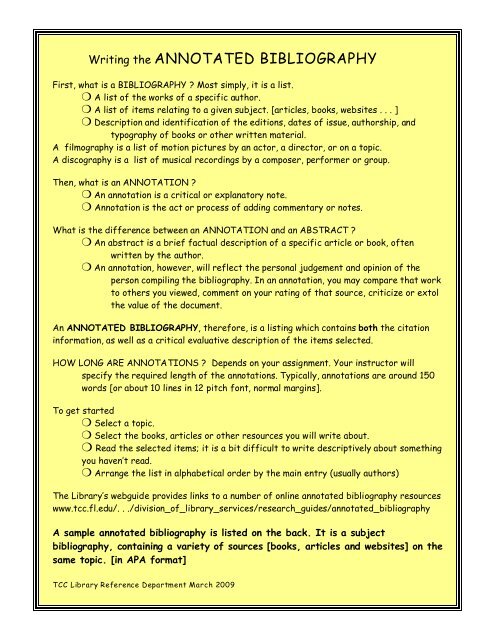



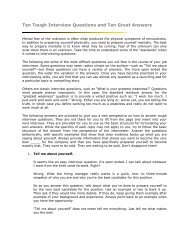
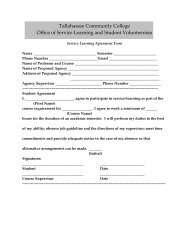
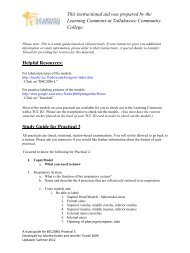
![[ ]2 [ ] [ ]x](https://img.yumpu.com/48761194/1/190x245/-2-x.jpg?quality=85)
